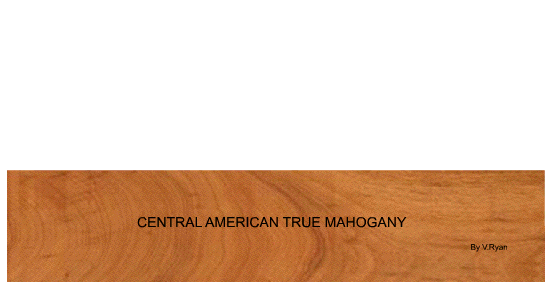| CLICK HERE FOR INDEX PAGE |
| CENTRAL AMERICAN MAHOGANY |
| V. Ryan © 2008 |
| Swietenia macrophylla Family: Meliaceae Common Names: Honduras mahogany, Bay-mahogany or Bay-wood (old UK name for timber shipped from the ‘Bay of Belize’), Brazilian mahogany (contemporary UK name), Big-leaved mahogany, Caoba (main South American and USA name), Araputanga, Acajou (French speaking areas), Mogno, Aguano (Brazil and Peru) and several more depending on the country of origin. Distribution: Widely distributed throughout Central and South America from Mexico southwards through the region of Central America including, Guatemala, Honduras and well into mainland South America where they are also found in Brazil, Peru and Bolivia. |
 |
|
Working Properties: A timber which is very easy
to work with both hand and machine tools. Some grades that display figured
material are susceptible to torn and chipped grain, and boards that are
found to be 'woolly' should be worked with sharp tools. It has good
nailing and screwing properties, can be glued and stained effectively and
will give excellent results with normal finishing techniques. The timber
also produces a good veneer. |
| CLICK HERE FOR NATURAL WOODS IN DETAIL |
| CLICK HERE FOR RESISTANT MATERIALS INDEX PAGE |